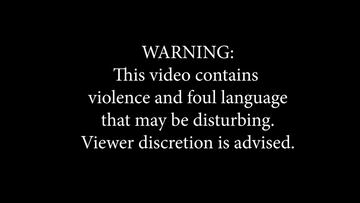PALESTINE PROTESTS
What is the law in the United States about peaceful protest and what are your rights?
Tension continues to grow across the country as police units are drafted in to deal with the thousands of students protesting actions in Gaza.

In the early hours of Thursday morning, a sizeable contingent of helmeted police forcefully entered a central plaza at the University of California, Los Angeles (UCLA) in an effort to disband a pro-Palestinian protest camp. This action came in response to an attack on the camp the previous night by pro-Israel supporters.
The pre-dawn police intervention at UCLA underscores the escalating tensions prevalent on college campuses across the United States. In the wake of ongoing protests over Israel’s actions in Gaza, confrontations between students, as well as clashes with law enforcement, have become increasingly common.

This incident serves as the latest flashpoint in a broader context of heightened emotions and polarised viewpoints surrounding the Israeli-Palestinian conflict. As such, it highlights the urgent need for dialogue, understanding, and peaceful resolution to address these deeply entrenched issues within academic communities and society at large.
The right to peaceful protest stands as a cornerstone of civil liberties in the country. Embedded within the First Amendment of the United States Constitution, this right underscores citizens’ ability to voice dissent, assemble peacefully, and demand change.
Congress shall make no law respecting an establishment of religion, or prohibiting the free exercise thereof; or abridging the freedom of speech, or of the press; or the right of the people peaceably to assemble, and to petition the Government for a redress of grievances.
However, the exercise of this fundamental right is not without its complexities. Understanding the legal landscape surrounding peaceful protest is vital for both protestors and law enforcement alike.
Palestinian protests: know your rights
At the heart of American democracy lies the concept of the public forum – spaces like streets, sidewalks, and parks where citizens can freely express themselves. These traditional public forums offer the broadest protections for speech and assembly. Moreover, public property, including plazas adjacent to government buildings, generally permits peaceful protest, provided it does not impede access.
Private property, however, operates under different rules. While property owners retain the right to impose speech regulations, the government cannot curtail speech on private property without the owner’s consent.
It’s important to note that the right to protest extends to counter-protesters as well. Law enforcement must ensure equal treatment of all groups while maintaining order. However, they can take measures to prevent physical confrontations by keeping antagonistic groups separated.
In the digital age, the right to record public events has become increasingly important. When lawfully present in any public space, individuals have the right to photograph or film anything in plain view, including interactions with law enforcement. However, private property owners may establish rules regarding photography on their premises.
What action can I take it my rights are violated?
Despite legal protections, instances of rights violations during protests can occur. If you find yourself in such a situation, documentation is key. Collecting evidence such as officers’ identification, witness statements, and any injuries sustained is crucial.
Following an incident, filing a written complaint with the relevant authorities is recommended. This can be done through the agency’s internal affairs division or civilian complaint board. Holding those responsible for rights violations accountable is essential for upholding the integrity of peaceful protest.
It’s worth noting that dispersal orders are a last resort for law enforcement when faced with a situation that poses a clear and present danger to public safety. Before dispersing a gathering, police must provide a reasonable opportunity for compliance, including adequate time and a clear exit route.
It’s imperative that individuals receive clear and detailed notice of a dispersal order, outlining the consequences for non-compliance and specifying a designated exit route. Failure to provide such notice undermines the legality of any subsequent arrests or charges.






